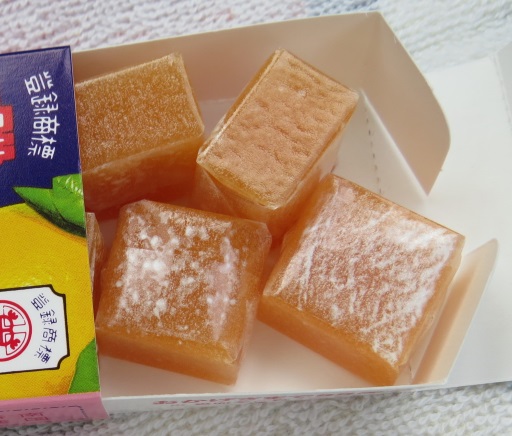arukōru 【アルコール】 from alcohol
Arukōru, which means alcohol, came from Dutch alcohol.
asubesuto 【アスベスト】 from asbest
Asubesuto, which means asbestos, came from Dutch asbest.
biiru 【ビール、麦酒】 from bier
Biiru, which means beer, came from Dutch bier.
bōruban 【ボールバン、ボール盤】 from boor-bank
Bōruban, which means drill press, came from Dutch boor-bank.
Although this is half katakana and half kanji, the kanji part is ateji. See Why do some gairaigo words have kanji?
buriki 【ブリキ、錻力、鉄葉、錻】 from blik
Buriki, which means tin, tin plate, came from Dutch blik.
dansu 【ダンス】 from dans
Dansu, which means dance, came from Dutch dans.
dokku 【ドック】 from dok
Dokku, which means dock, dry dock, came from Dutch dok.
This is commonly used in the expression ningen dokku (人間ドック), a health check.
garasu 【ガラス、硝子】 from glas
Garasu, which means glass, window glass, came from Dutch glas.
A glass is called koppu (こっぷ), also from Dutch.
gasu 【ガス】 from gas
Gasu, which means gas, came from Dutch gas.
gomu 【ゴム】 from gom
Gomu, which means rubber or gum, came from Dutch gom.
hisuterii 【ヒステリー】 from hysterie
Hisuterii, which means hysteria, came from Dutch hysterie.
hoppu 【ホップ】 from hop
Hoppu, which means hop (the plant), came from Dutch hop.
inki 【インキ】 from inkt
Inki, which means ink, came from Dutch inkt.
kaban 【カバン、鞄】 from kabas
Kaban, which means bag, came from Dutch kabas.
kanfuru 【カンフル】 from kamfer
Kanfuru, which means camphor, came from Dutch kamfer.
karan 【カラン、下欄】 from kraan
Karan, which means tap or faucet, came from Dutch kraan.
kiniine 【キニーネ】 from kinine
Kiniine, which means quinine, came from Dutch kinine.
kokku 【コック】 from kok
Kokku, which means cook (the person) or chef, came from Dutch kok.
konpasu 【コンパス】 from kompas
Konpasu, which means compass (drawing instrument), came from Dutch kompas.
The word konpasu was also used for the direction-finding compass.
kōhii 【コーヒー、珈琲】 from koffie
Kōhii, which means coffee, came from Dutch koffie.
koppu 【コップ】 from kop
Koppu, which means drinking glass, came from Dutch kop.
koruku 【コルク】 from kurk
Koruku, which means cork, came from Dutch kurk.
manto 【マント】 from mantel
Manto, which means cloak, came from Dutch mantel.
marariya 【マラリヤ】 from malaria
Marariya, which means malaria, came from Dutch malaria.
morumotto 【モルモット】 from marmot
Morumotto, which means guinea pig, came from Dutch marmot.
The guinea pig was first introduced to Japan by the Dutch in 1843.[1]
masuto 【マスト】 from mast
Masuto, which means mast (of a ship), came from Dutch mast.
mesu 【メス】 from mes (knife)
Mesu, which means scalpel, came from Dutch mes (knife).
moruhine 【モルヒネ】 from morfine
Moruhine, which means morphine, came from Dutch morfine.
nikkeru 【ニッケル】 from nikkel
Nikkeru, which means nickel, came from Dutch nikkel.
oburāto 【オブラート】 from oblaat
 |
| Oburāto by 西表カイネコ CC licence |
|---|
Oburāto may have come from Dutch oblaat.
An oburāto is a disc of thin starch used to wrap sweets or medicine. The origin of the Japanese word is disputed. It may also have come from German Oblate. See Which Japanese words come from German?
orugōru 【オルゴール】 from orgel
Orugōru, which means music box, came from Dutch orgel.
The Dutch word "orgel" means "organ".
otenba 【オテンバ、お転婆】 from ontembaar
Otenba, which means a tomboy, may have come from Dutch ontembaar.
The Japanese word "otemba", meaning a tomboy, is suggested to have come from the Dutch word "ontembaar", meaning untameable. However, this may just be a coincidence.
pen 【ペン】 from pen
Pen, which means pen, came from Dutch pen.
penki 【ペンキ】 from pek
Penki, which means paint, came from Dutch pek.
The Dutch word "pek" means "pitch", a substance like tar used for coating ships. Penki originally referred to coating used to protect and waterproof wooden ships. It now means paint.
pinsetto 【ピンセット】 from pincet
Pinsetto, which means tweezers, came from Dutch pincet.
pisutoru 【ピストル】 from pistool
Pisutoru, which means pistol, came from Dutch pistool.
pompu 【ポンプ】 from pomp
Pompu, which means pump, came from Dutch pomp.
rampu 【ランプ】 from lamp
Rampu, which means lamp, came from Dutch lamp.
randoseru 【ランドセル】 from ransel
Randoseru, which means knapsack, came from Dutch ransel.
In modern Japanese, randoseru is used only for the leather school satchels worn by Japanese elementary school children. See How is Japanese writing taught to Japanese children? for more about the Japanese education system.
ransetto 【ランセット】 from lancet
Ransetto, which means lancet, came from Dutch lancet.
renzu 【レンズ】 from lens
Renzu, which means lens, came from Dutch lens.
retoruto 【レトルト】 from retort
Retoruto, which means retort, a container used for heating, came from Dutch retort.
In Japanese this is often used in the form retoruto shokuhin (レトルト食品), which are foods stored in containers called "retort pouches".
safuran 【サフラン】 from saffraan
Safuran, which means saffron, came from Dutch saffraan.
shiroppu 【シロップ】 from siroop
Shiroppu, which means syrup, came from Dutch siroop.
supoito 【スポイト】 from spuit
Supoito, which means pipette, came from Dutch spuit.
This originates from a misunderstanding of the Dutch word "spuit", which actually means "spout" or "syringe" rather than "pipette".
sukoppu 【スコップ】 from schop
Sukoppu, which means spade or shovel, came from Dutch schop.
zukku 【ズック】 from doek
Zukku, which means canvas cloth; plimsolls, came from Dutch doek.
In modern Japanese, zukku (ズック) usually refers to a kind of shoe worn by school children, also known as uwabaki (上履き).
Canvas cloth is called hanpu (帆布) or kyanbasu (キャンバス).




